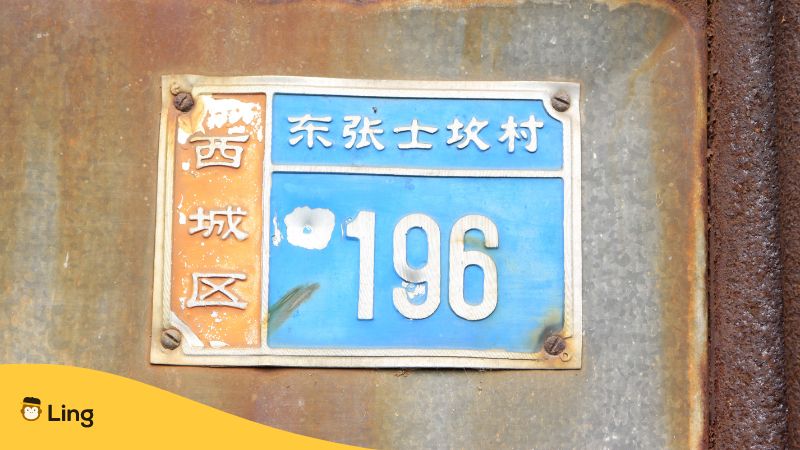Have you ever found yourself scratching your head, trying to decipher a Chinese address? Trust us. You’re not alone! In a country where every street corner tells a story, knowing how to read Chinese addresses can be a bit like cracking a secret code. But worry not because we’re about to make it as easy as ordering your favorite takeout at their street address!
In this practical guide, we’re diving headfirst into the fascinating universe of Chinese addresses. Whether you’re sending international mail from the bustling streets of Shanghai, navigating the unique address format of the Inner Mongolia Autonomous Region, or ensuring you have the correct information to reach your destination in Chengdu City, we’ve got you covered!
How To Read Chinese Addresses: Understanding The Structure
Chinese addresses, with their unique hierarchies and compact structure, might appear puzzling at first glance. However, once you unravel their logic, navigating the streets of China becomes an exciting adventure.

The Largest To Smallest Hierarchy
In the Chinese address system, the hierarchy begins with the largest unit and progressively narrows down to the smallest, which is quite the opposite format of English addresses. Understanding this hierarchy is the key to reading Chinese addresses.
Province/Region
At the very top, you have the province or region. There are 22 provinces in China, and another province claimed but not administered is Taiwan. Each province has its unique flair. Think of them as China’s big states.
City
These are Chinese cities like Beijing, Tianjin, Shanghai, and Chongqing. Chinese cities fit inside the province and have their own unique vibe.
Districts, Towns, And Villages
Now it gets interesting. Whether you’re navigating the bustling streets of Beijing’s historic Dongcheng District or exploring the tranquil villages of Guilin, it’s important to understand the nuances of Chinese addresses.
Street Name And Numbers
After villages, you hit the streets and numbers. This is where you get really close! And wrapping it up with the building’s name or room number, you’ve reached your destination!
The above address hierarchies are easy to understand. Make sure to remember – largest to smallest!
Absence Of Spaces Between Words
In Chinese addresses, spaces between words take a vacation. Unlike English addresses, where we love spaces, Chinese addresses are all about compactness, often showcasing intricate Chinese characters.
So when you’re navigating the streets of China or providing the sender’s address for a parcel to be shipped through China Post, remember, it’s a space-free adventure. And if you ever get lost, trust in the power of technology like Google Maps to guide you to the correct place!

Reading Chinese Addresses
In China, understanding the basic address format is the key to unlocking the secrets of the nation. So, let’s learn all about reading Chinese addresses!
Address Structure For Provinces And Municipalities
When it comes to deciphering a Chinese address in Mainland China, understanding the format is key. The address has this basic format:
Province (省) > City (市) > County (县) > District (区) > Town (镇) > Village (村) > Avenue (大街) > Street number (街道) > Road (路) > Alley (弄) > Place/Community no. (号) > Place/Community name (名字) > Building name (号楼, 栋) > Floor (地面) > Room no. (室)
Address Structure For Autonomous Regions
China has these fascinating places called “Autonomous Regions.” They are China’s regions that have a bit more independence in governing. Places like Inner Mongolia, Tibet, and Xinjiang fall into this category. Think of them as a celebration of cultural diversity within China’s rural areas. Now, in just two lines, let’s address the crucial details of how to write your letter or business letter to these unique districts.
Let’s decode the basic structure for the special Chinese address format:
City (市) > County (县) > District (区) > Town (镇) > Village (村) > Avenue (大街) > Street (街道) > Road (路) > Alley (弄) > Place/Community no. (号) > Place/Community name (名字) > Building no (号楼, 栋) > Floor (地面) > Room no. (室)
The example above address provided above can be conveniently written in two lines or more, ensuring clarity for both the recipient and the postal service handling the box or the rest of your mail or packages. It’s all about making the process smoother and more efficient.
Address Structure For Special Administrative Regions
When it comes to addressing and sending mail to vibrant Special Administrative Regions like Hong Kong and Macau, the address structure is like penning a fascinating letter to a bustling business district.
Let’s break down how you’d tackle this Chinese address easily:
District (区) > Avenue (大街) > Street (街道) > Road (路) > Alley (弄) > Place/Community no. (号) > Place/Community name (名字) > Building no (号楼, 栋) > Floor (楼) > House no. (室)

Mastering The Art Of Reading Chinese Addresses
Congratulations, you’ve just leveled up your address-reading skills in China! We’ve journeyed through the fascinating world of Chinese addresses, from the largest administrative divisions down to the tiniest details of the building number. You’re now equipped with the tools to decipher any address like a pro.
Chinese addresses may initially appear as a puzzle, but with practice and the guidance of Google Maps to aid your search, they’ll become as familiar as your family. Remember to take note of the tips and examples we’ve written down to navigate the diverse tapestry of Chinese culture and landscapes with ease.
Learn Chinese With Ling!
Ready to become a language maestro? Unlock a world of linguistic adventures with the Ling app! Whether you’re learning a new language or honing your skills in one you already know, we’ve got your back. It’s as easy as 1-2-3! Don’t miss out on the fun – join our Ling community now!
Download the app on the App Store and Play Store today, and let the language journey begin.



































































